Moray, Maras, and the Salineras
Continuing our conquest of ancient ruins, it was time to visit the Inca ruins of Moray. This site is a little bit out of the way, but also not far from a more modern site – Maras salineras (salt ponds).
Our goal was to visit these two sites – neither of which have any close public transport – without having to get a private taxi or pay for a tour. The best way to do it (according to us!) is to get to the Moray ruins, and then you can walk around 14km down to the main road between Ollantaytambo and Urubamba, passing through the small village of Maras, and the salt ponds. From the main road it’s easy to flag down a bus back to Ollantaytambo where we were staying.
So to start the day out, we needed to get to Moray ruins – this involved a minivan combi to the ‘Maras junction’, and from there a shared taxi up to the ruins. The shared taxis – which are like a normal taxi, but they wait until there are five (or sometimes more….) people in it before leaving for its destination – generally take villagers from the ‘Maras junction’ on the main road, up to the village of Maras – but they will continue the extra 3km to the ruins for a bit extra on the fare.
This part of the journey went really well, and we didn’t have to wait very long for either the minivan, or the shared taxi to fill up at the junction – so far so good! 🙂
The ruins at Moray are a system of circular agricultural terraces, situated in different places and levels throughout the site – which is located high on a mountain. What is amazing about these terraces, is that they are placed specifically in locations that get different amounts of sun and wind, and this actually creates small microclimates in each area! The temperature can vary by as much as fifteen degrees between the different areas, and so lots of different types of crop can be grown. How clever is that?! YES, the Incas were VERY CLEVER!
The terraces themselves actually look really beautiful, and there are tracks all around the site at different levels so you can look at them from all different directions. We spent a happy couple of hours just walking around the whole site, and right up to the top viewpoint.
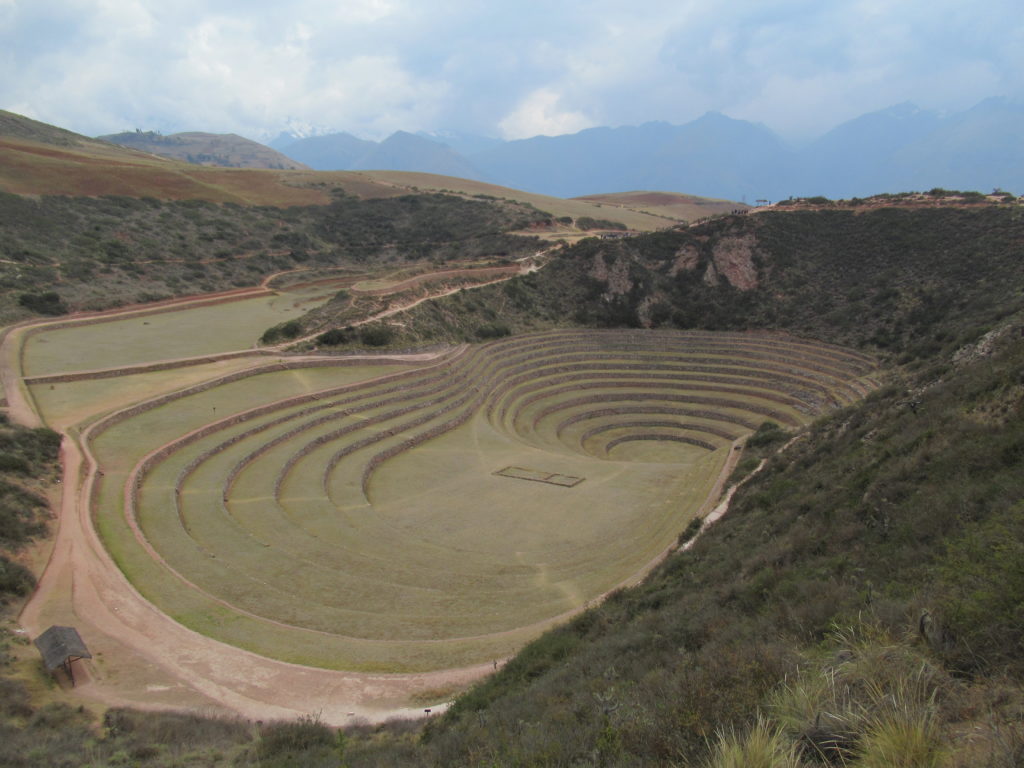
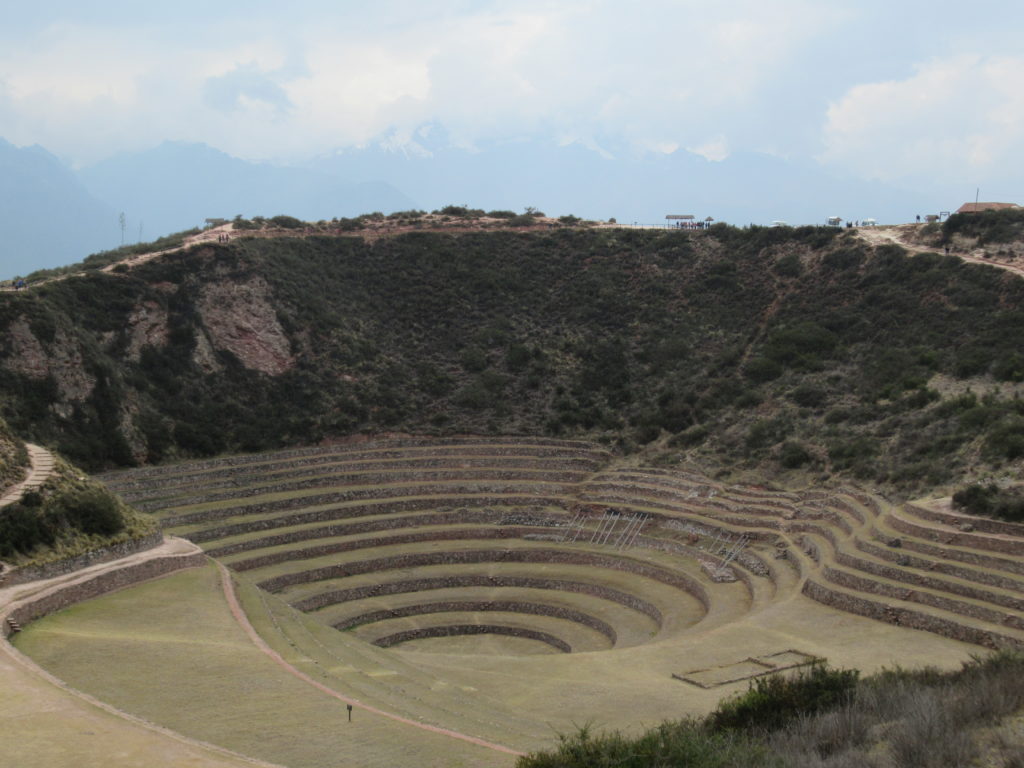
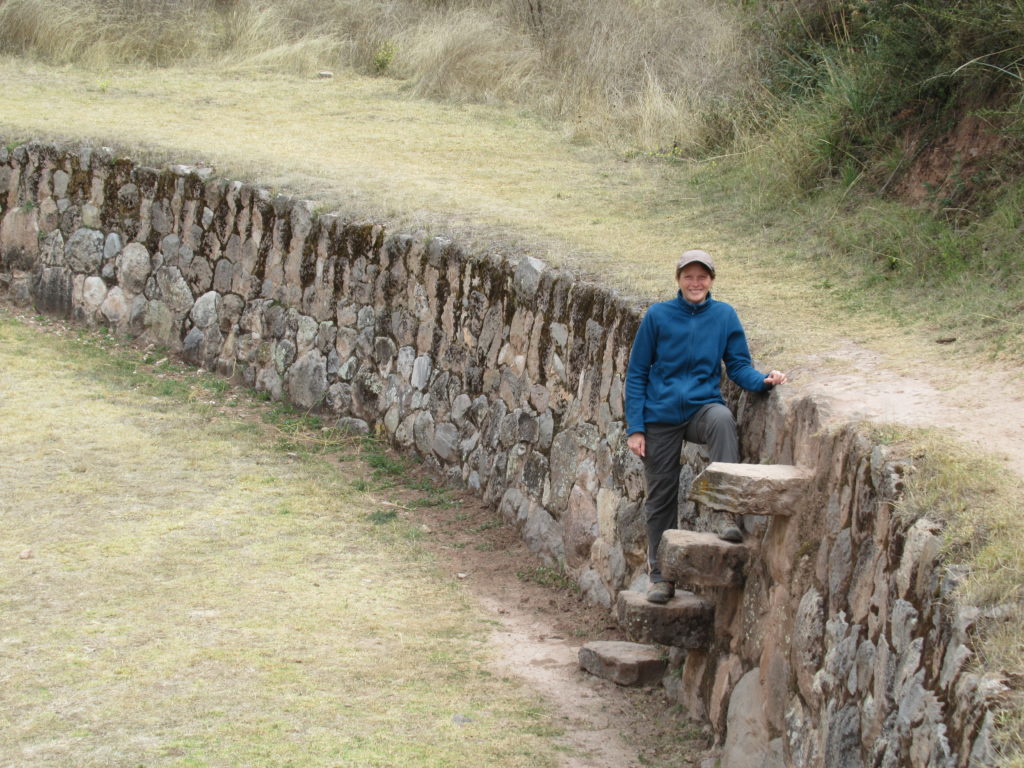
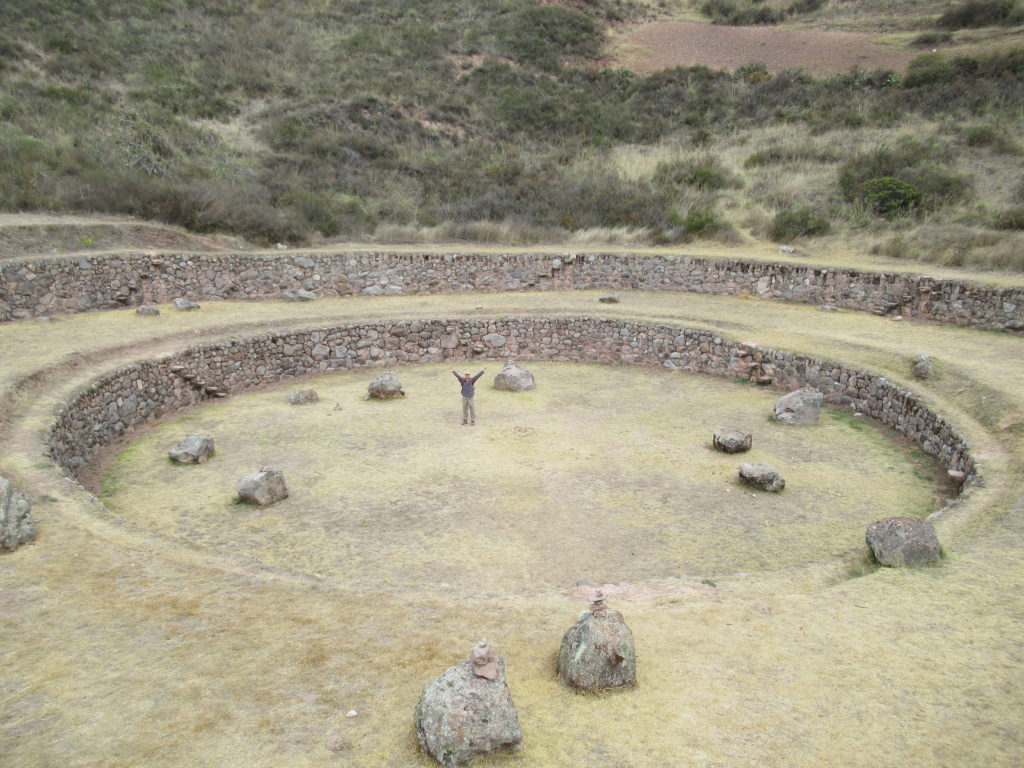
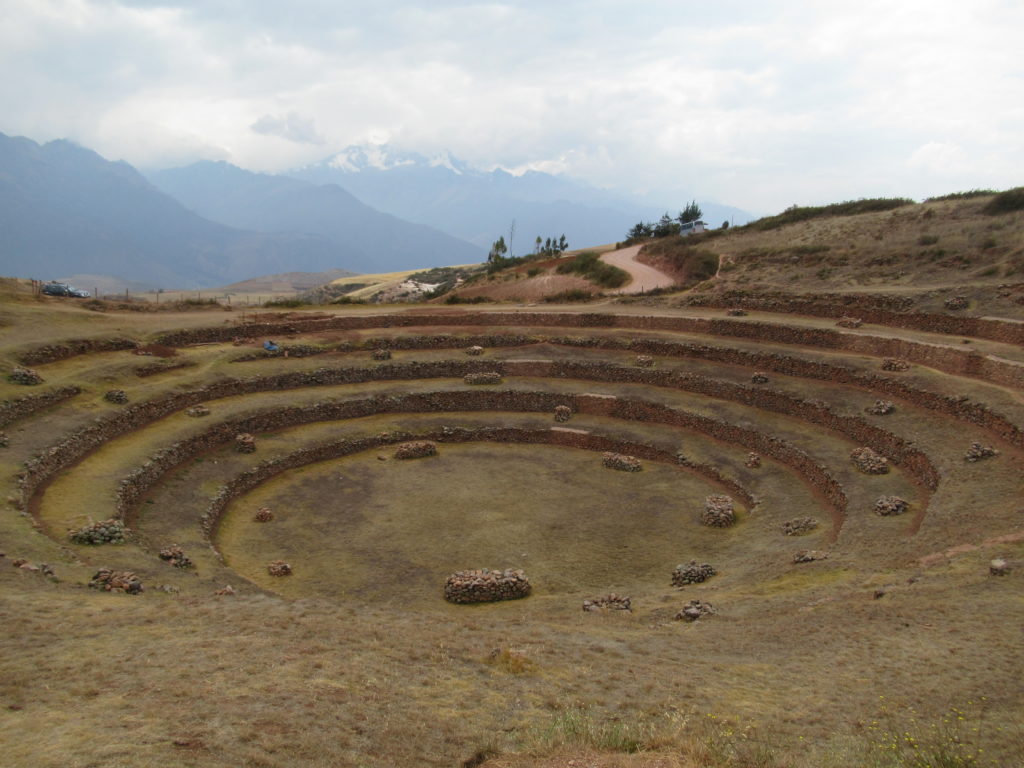
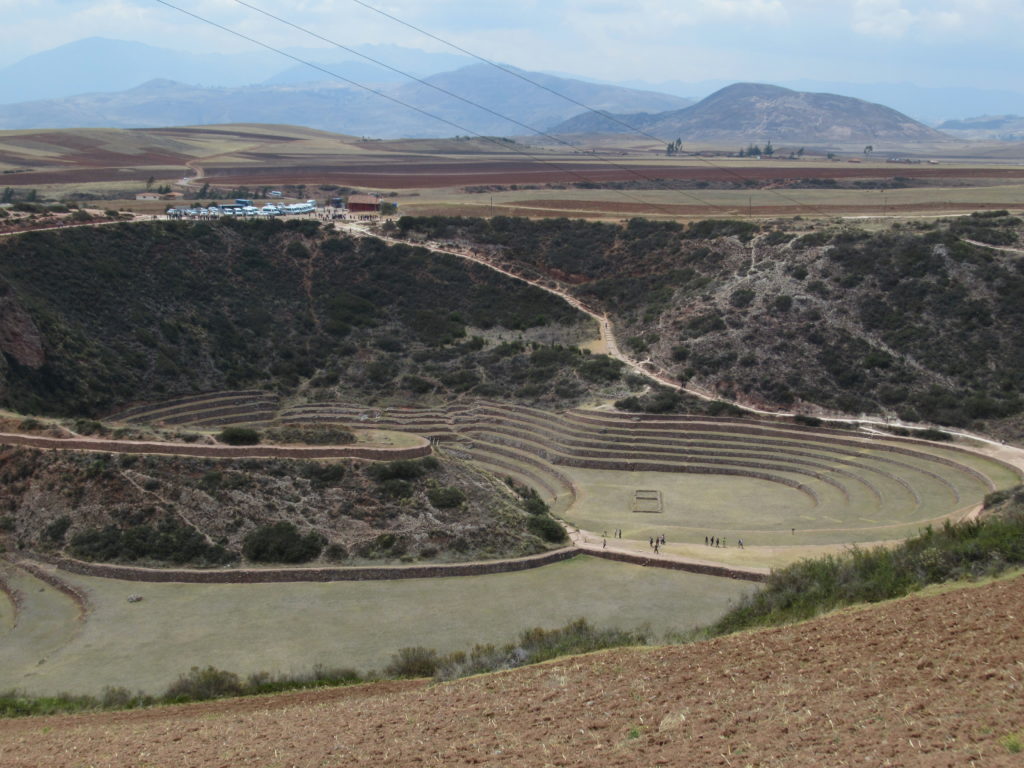
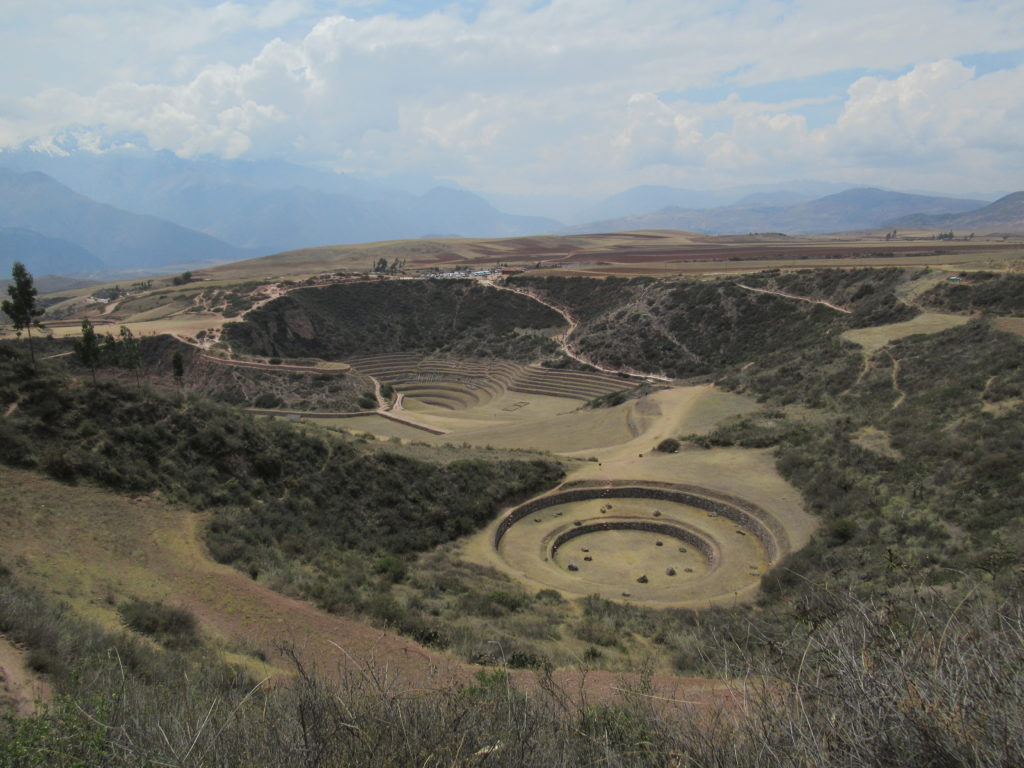
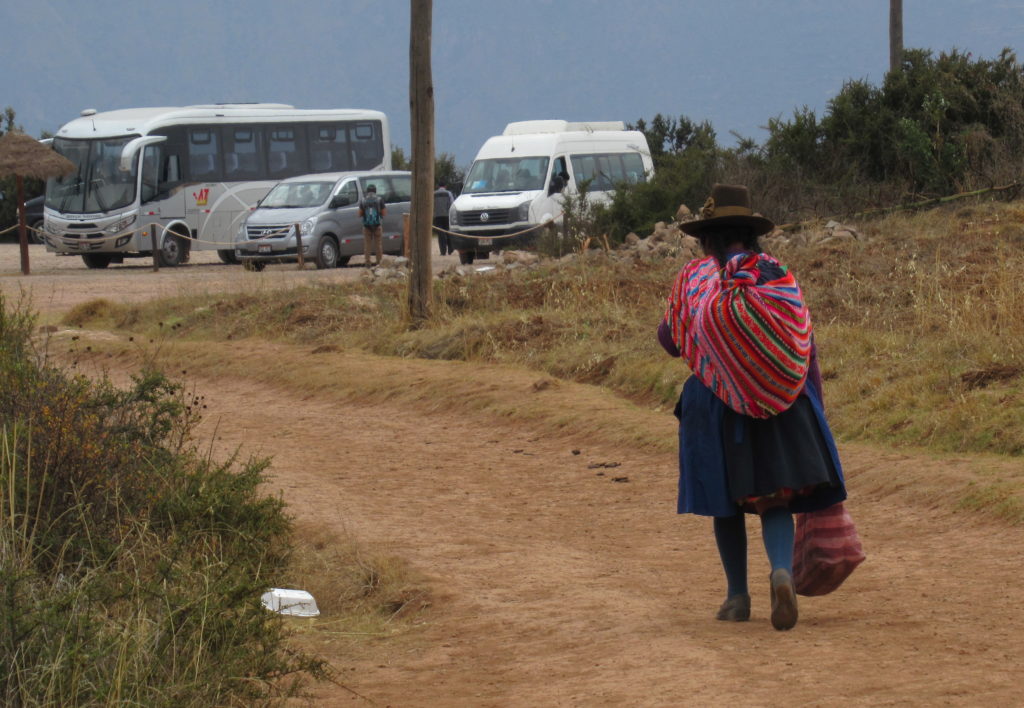
The next part of the journey was going to be a bit more complicated…. we needed to walk towards the village of Mara. The route to get there is along some dirt roads, and not signposted. We had read online that some people had walked this way – but they did seem to get lost fairly often… the advice was generally to ‘ask somebody which way it is…..’
Luckily we had an amazing map to help guide us on the journey as well…

It turned out that the map wasn’t quite enough for us to find the way…:-) so we asked someone to point us in the right direction, and off we went…. The walk to the village of Maras turned out to be really scenic, and highly enjoyable. We pretty much just followed the same dirt road all the way there – only getting worried once, when it veered off in the wrong direction for quite a while. It turned out that it was just going around a big valley, and it soon reverted to the correct direction.
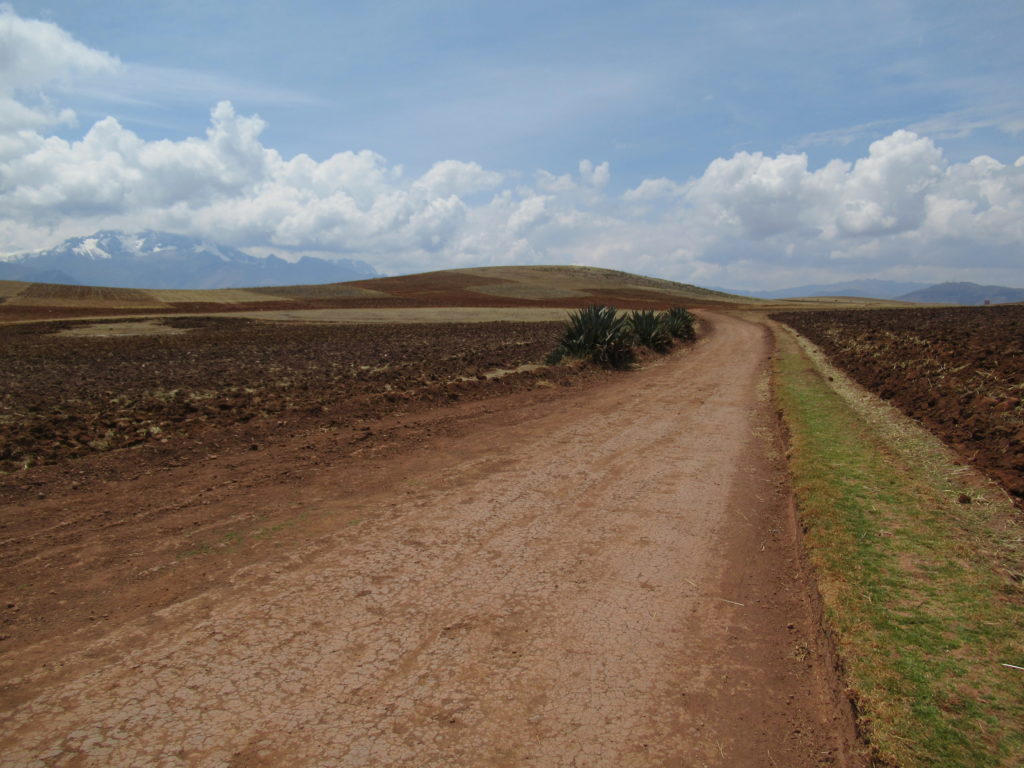

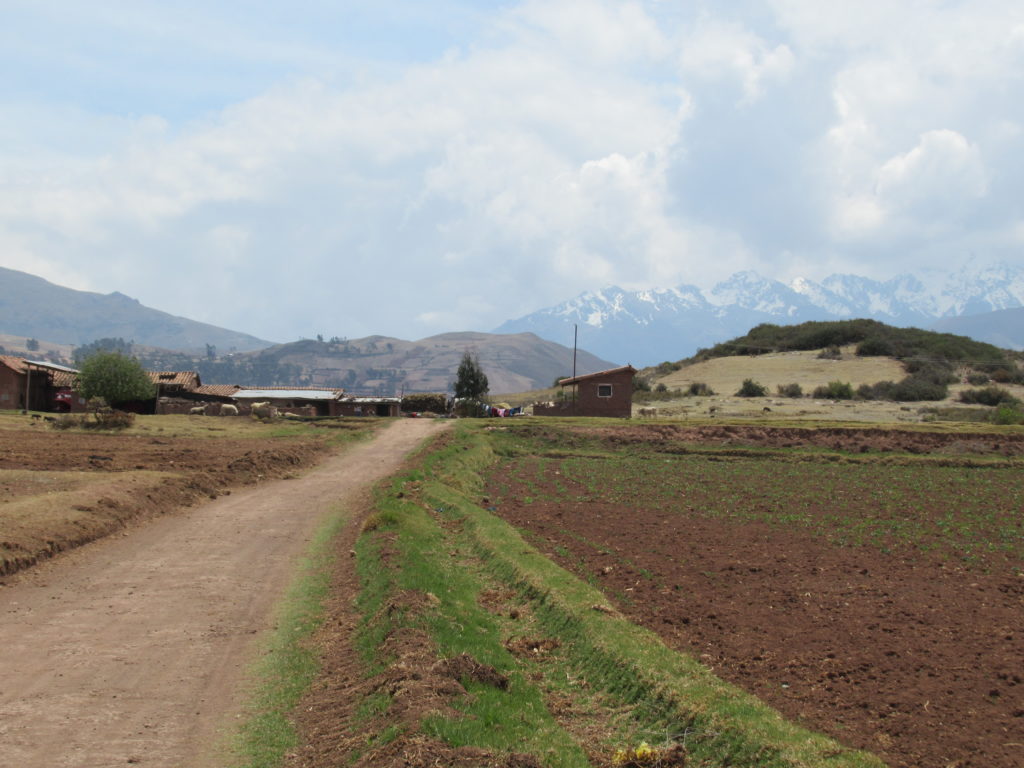
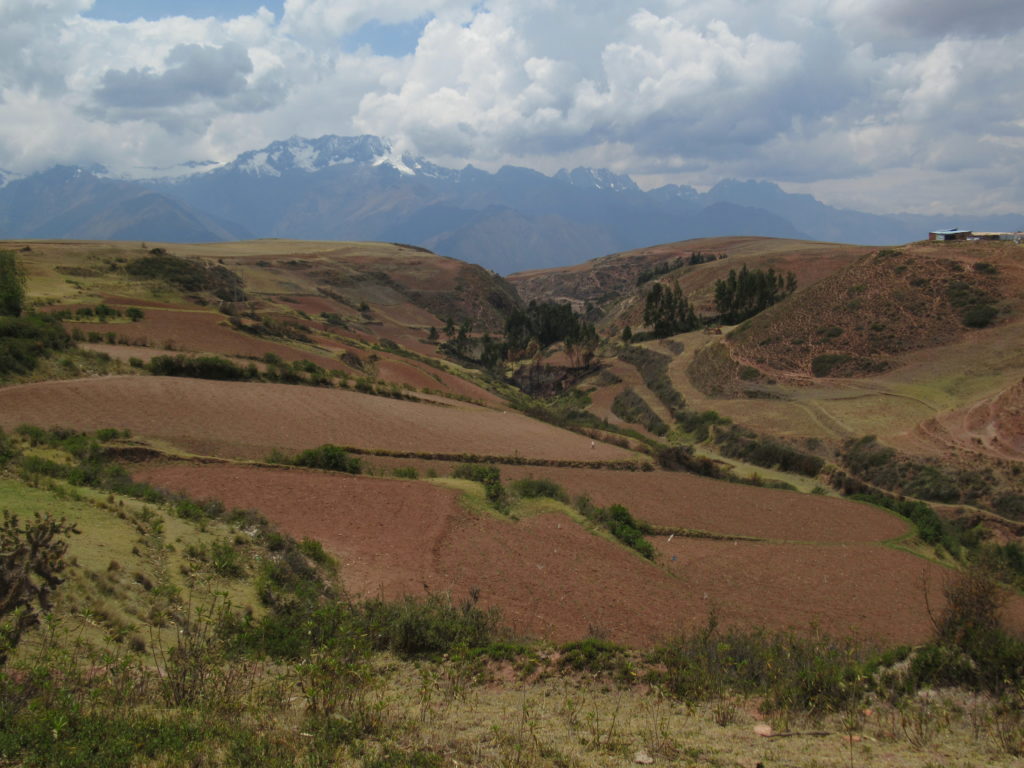
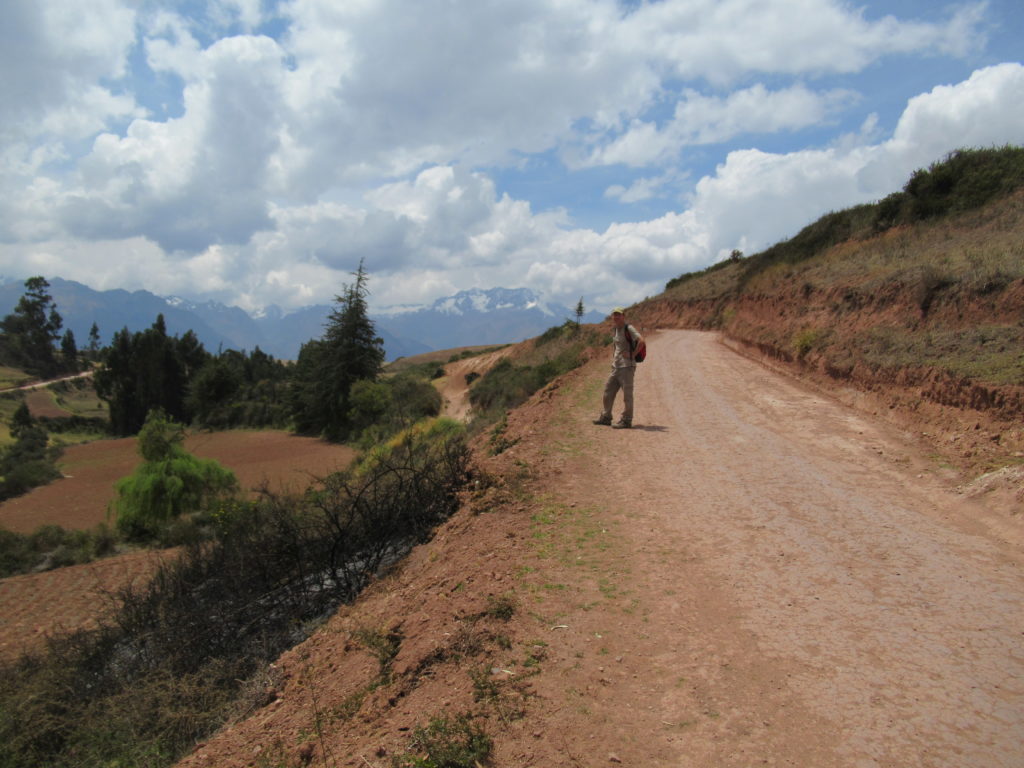
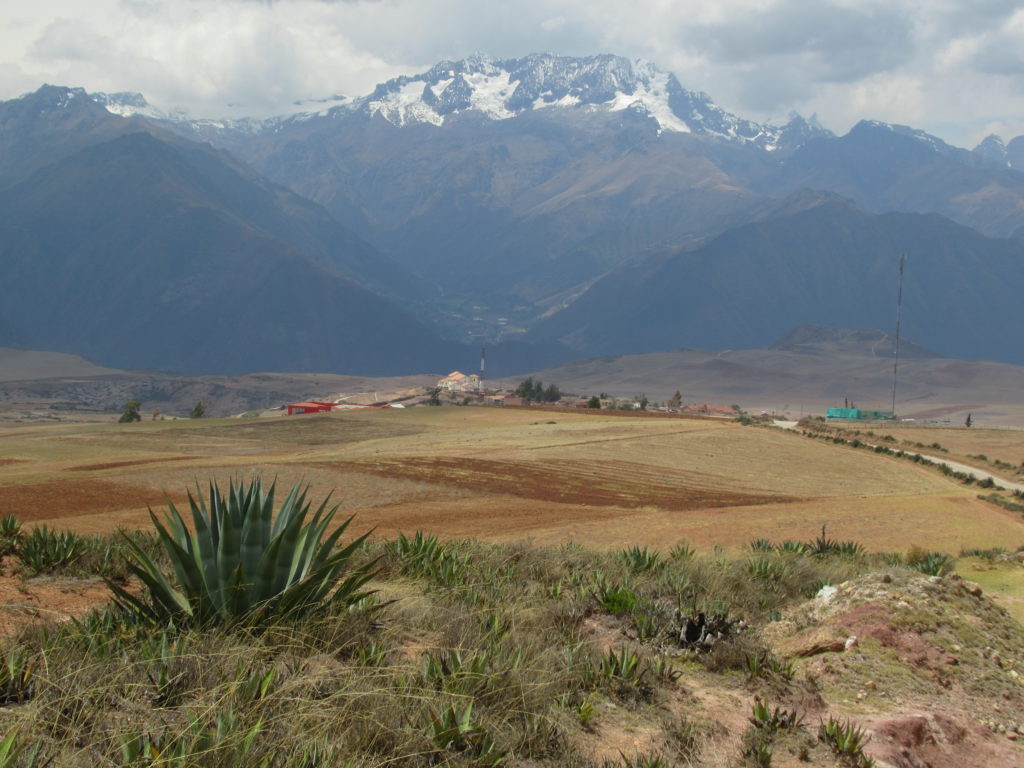
It took around 90 minutes to walk the 6km or so into the village of Maras – and we stopped there for a drink and lunch.
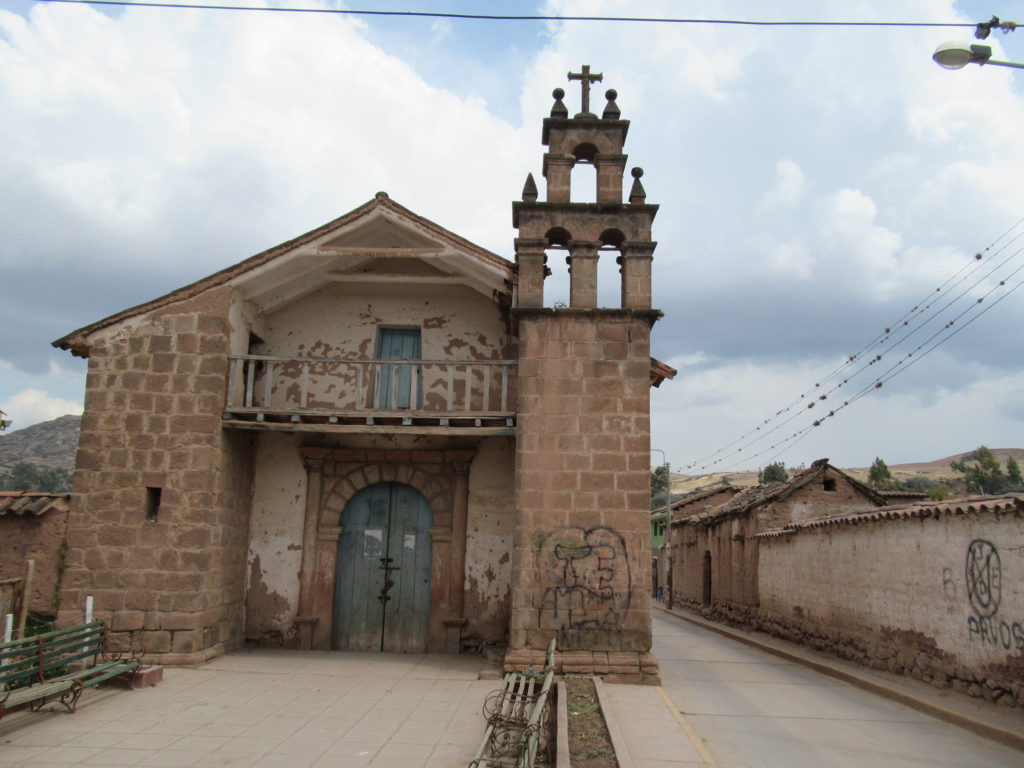
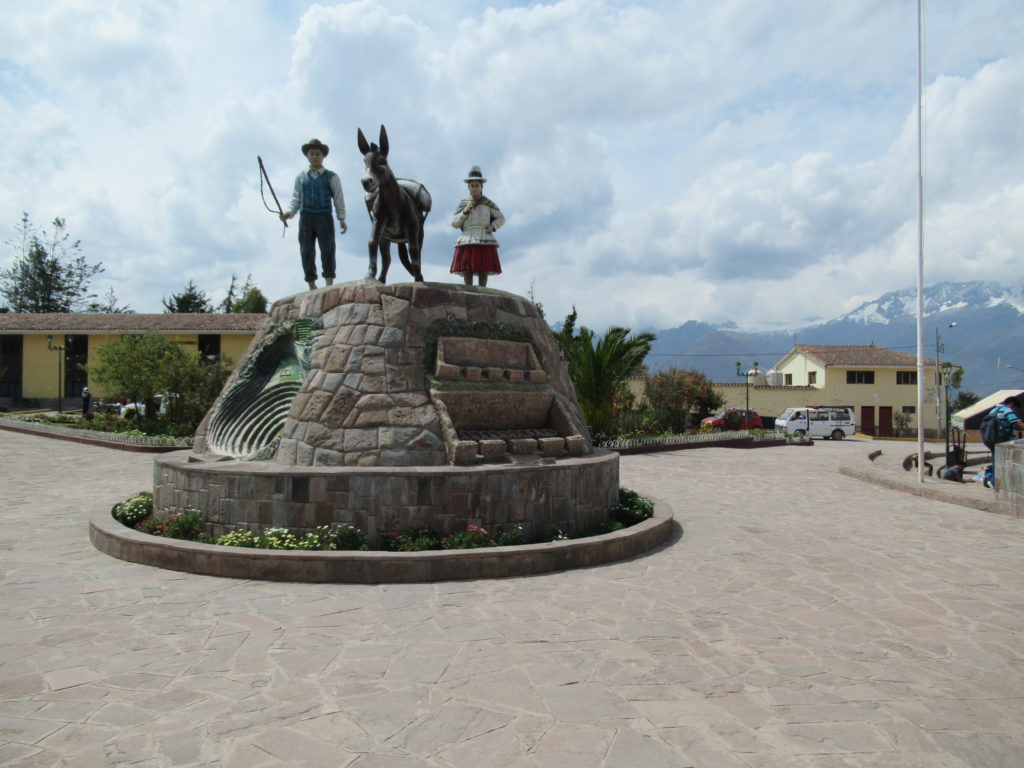
After lunch, it was time to continue towards the salt ponds. This trail was well-marked (as long as you could find the start of it!) and was an actual trail, as opposed to a road. From now on, it was all downhill towards the salt ponds, and this trail was really nice and scenic too.
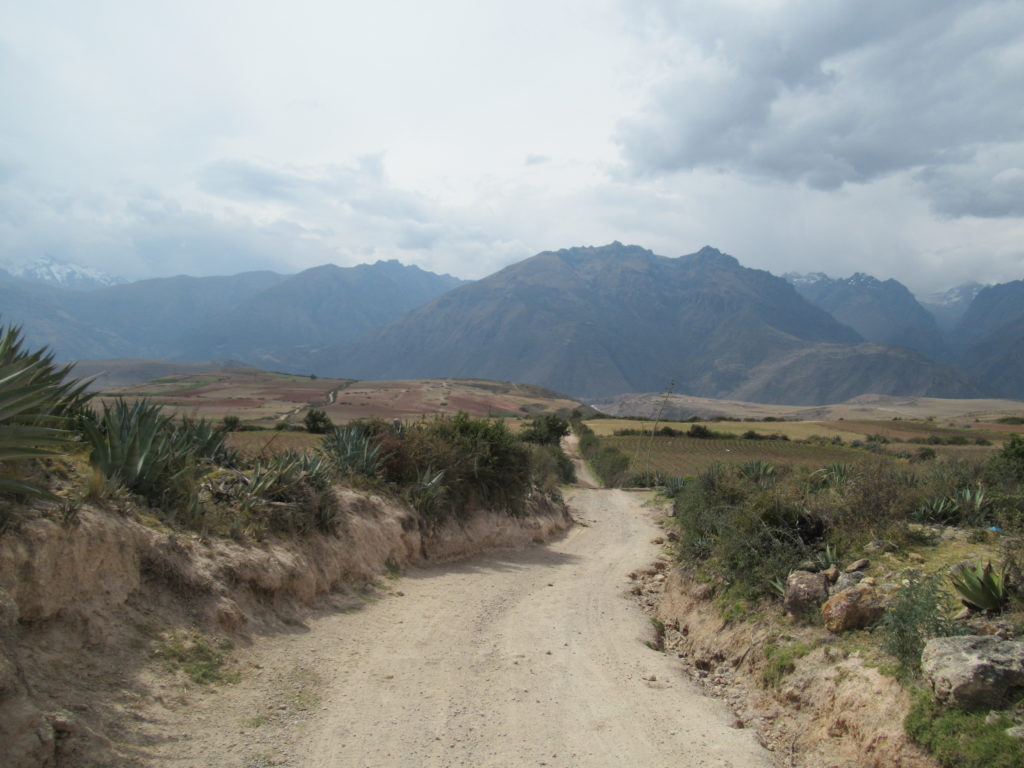

After around 4km, we got our first glimpse of the salt ponds. I have to say that we were absolutely amazed by them! They didn’t look like anything that we had ever seen before…
The ponds are a set of terraces carved into a steep mountain valley, with a stream running alongside it that fills the ponds. It’s a subterranean stream that happens to be salty, and they divert the water to fill the ponds with a complex system of channels that has been created. When a pond is full, the water supply to that pond can be turned off, and the sun evaporates the water – leaving the salt stuck to the mud surface of the pond. The salt can then be collected.
Amazingly, this was all created more than 500 years ago, and still operates today – with the local community running the salt ponds, and collecting the salt. It is quite a sight to behold – a sea of brown and white ponds jammed into a steep mountainside, with people amongst them collecting the salt. They have opened a small section on the side of the ponds for tourists to have a walk through and get close to the ponds – so off we went!
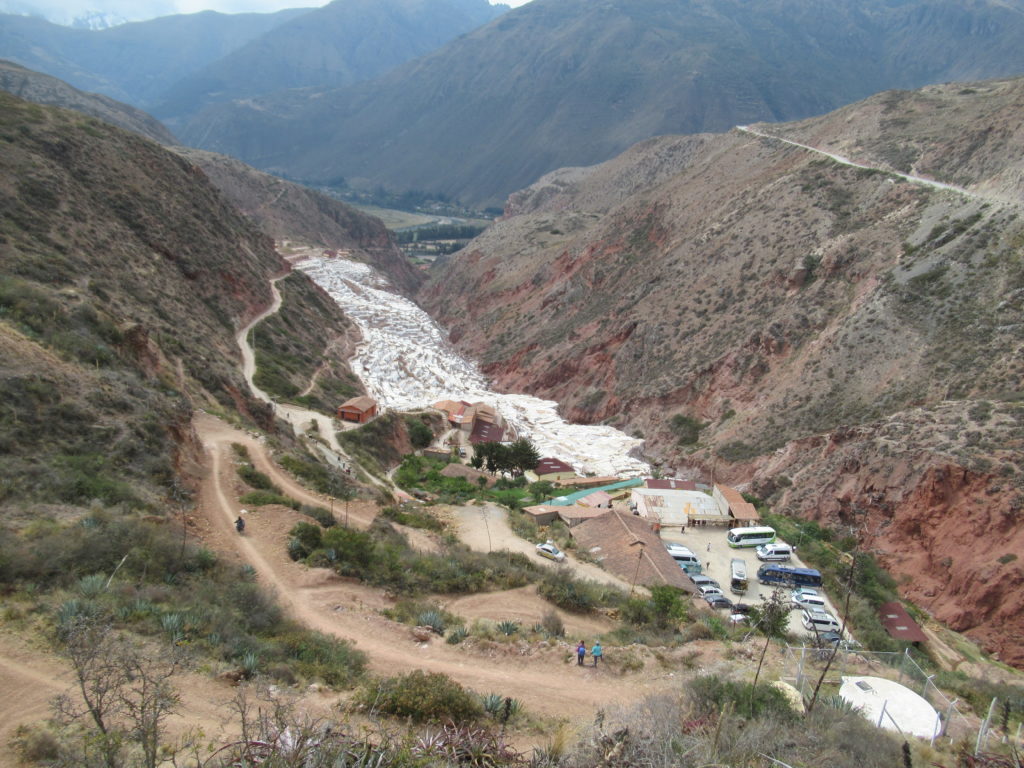
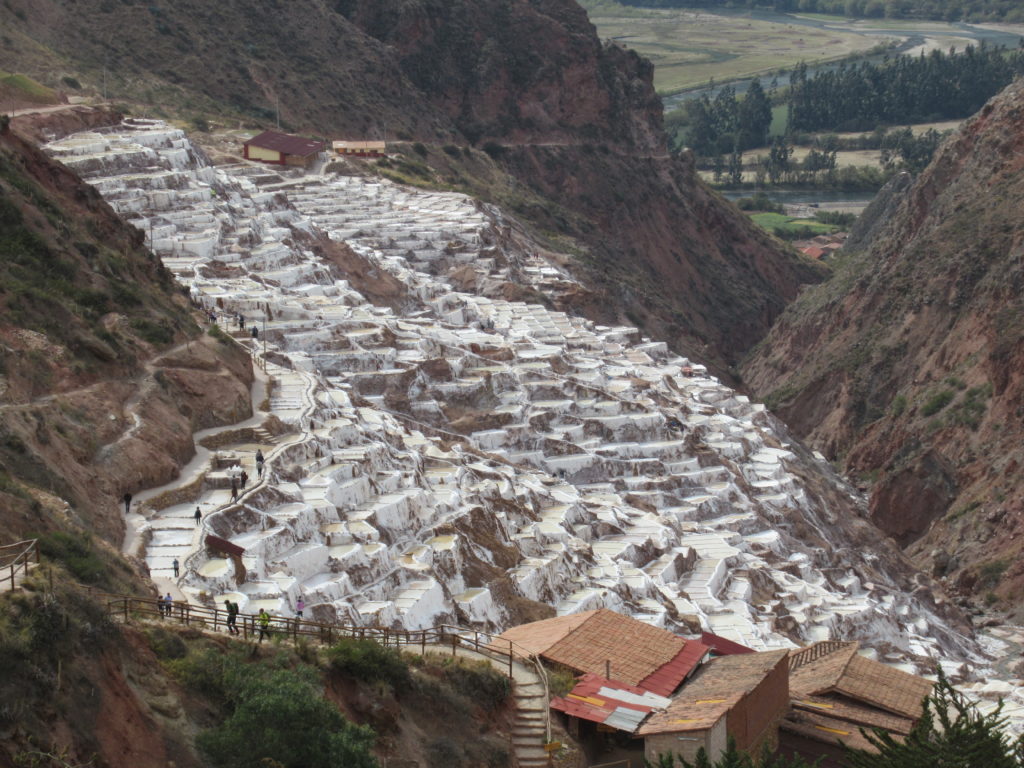
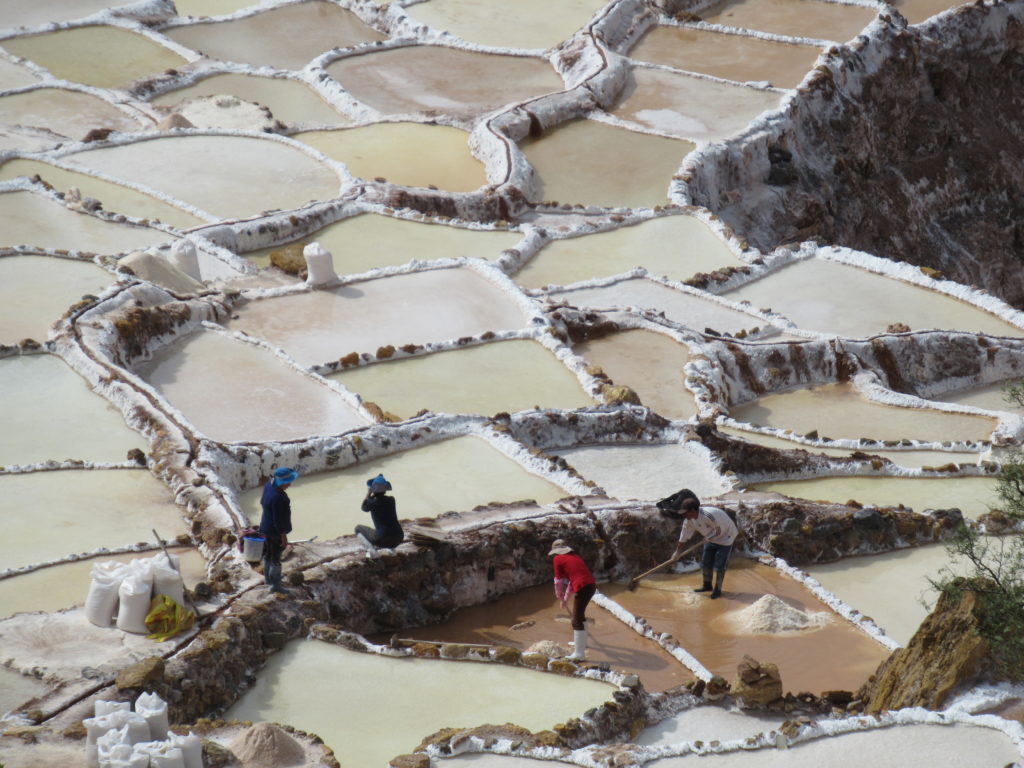
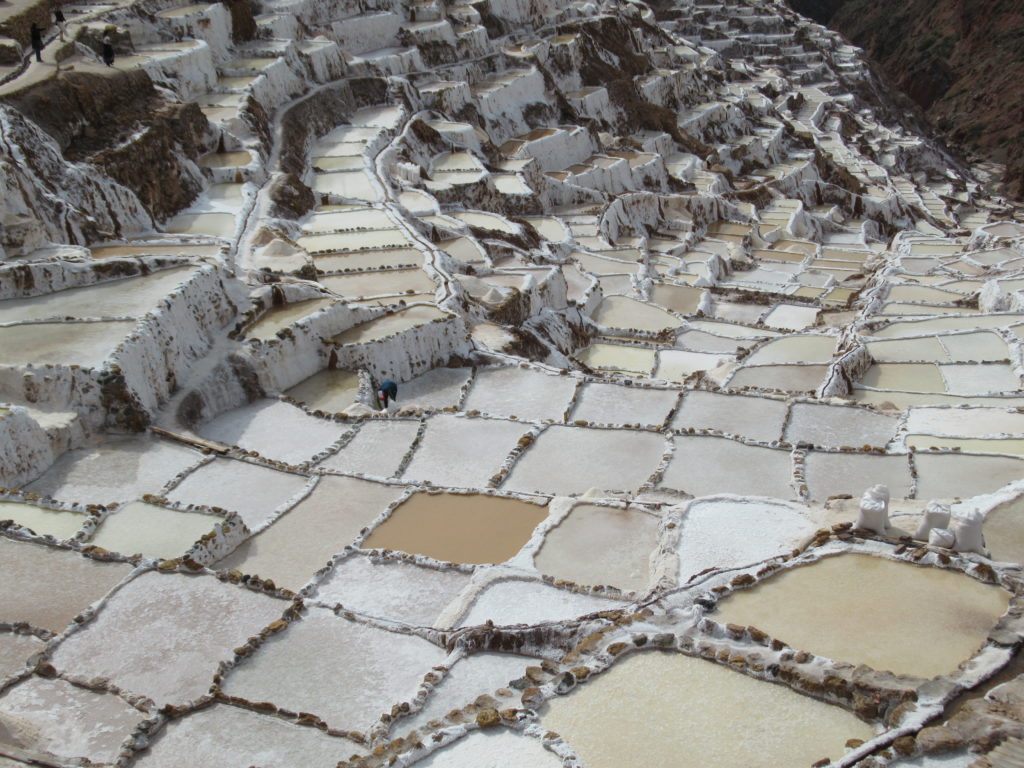
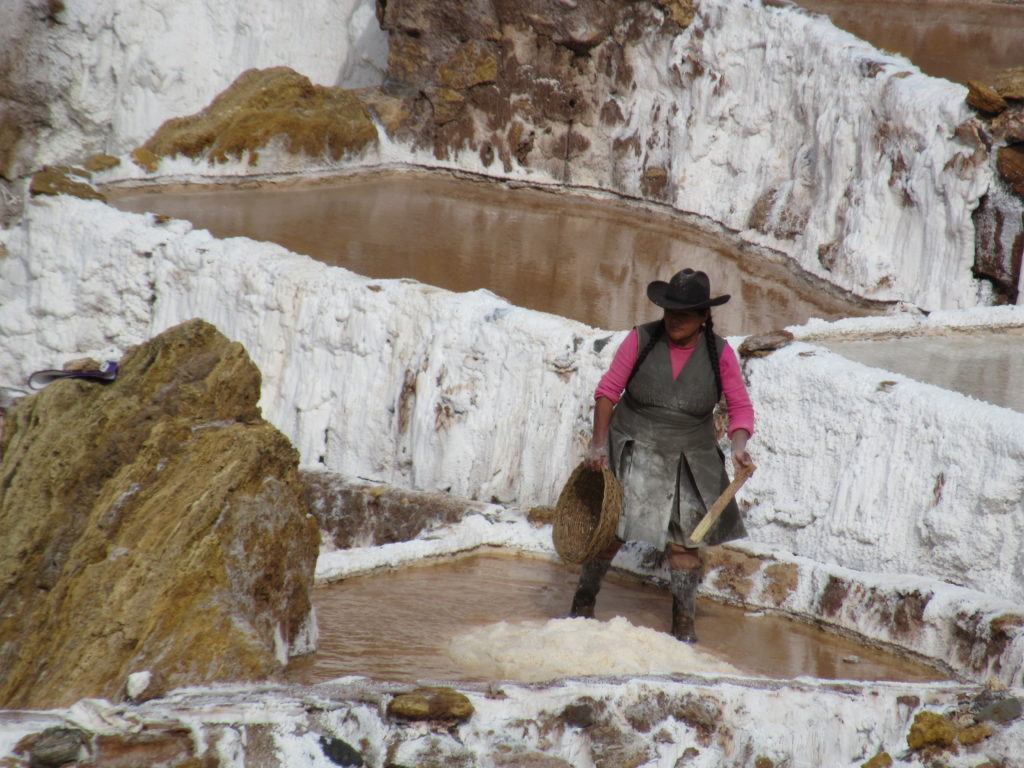
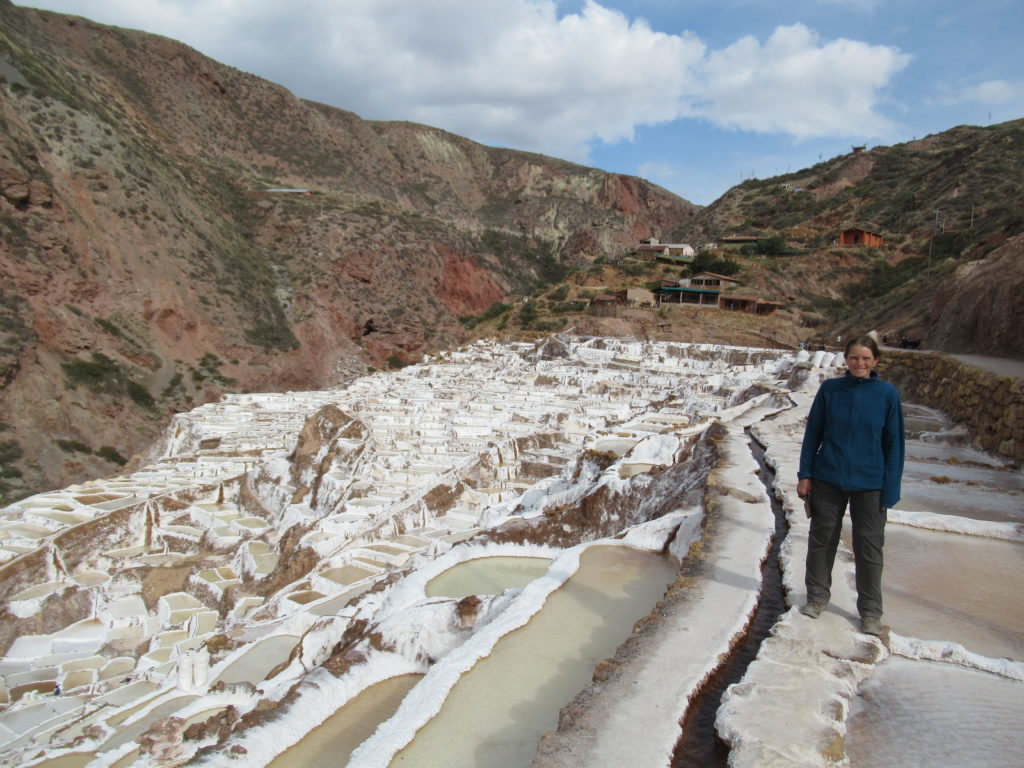
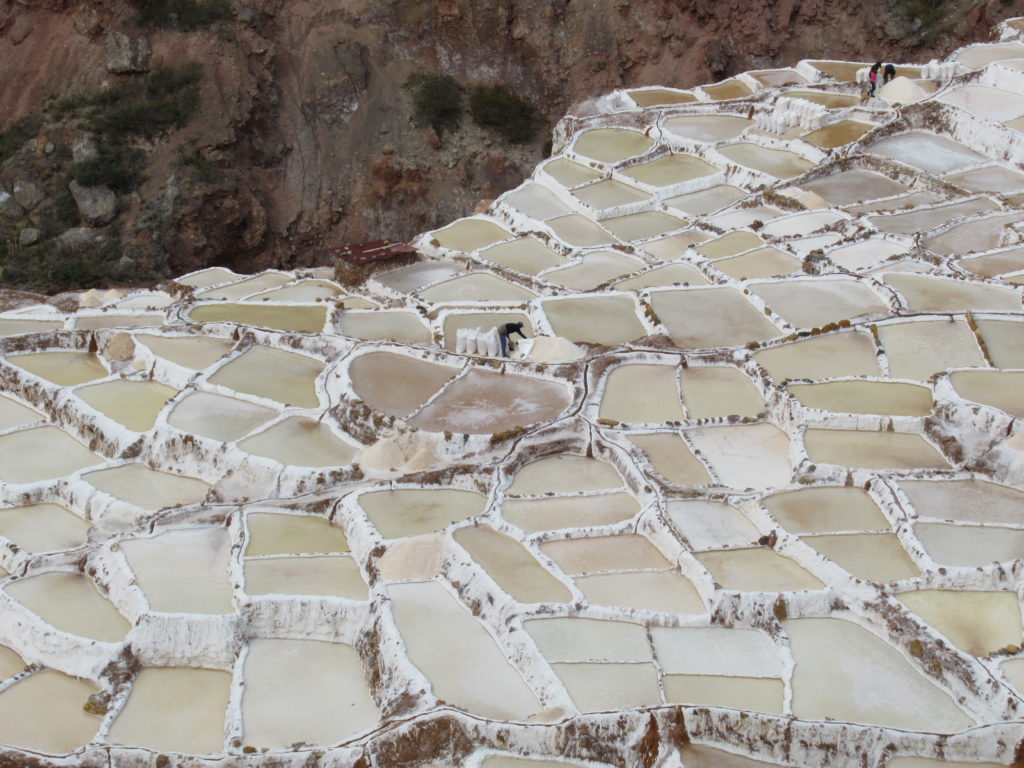
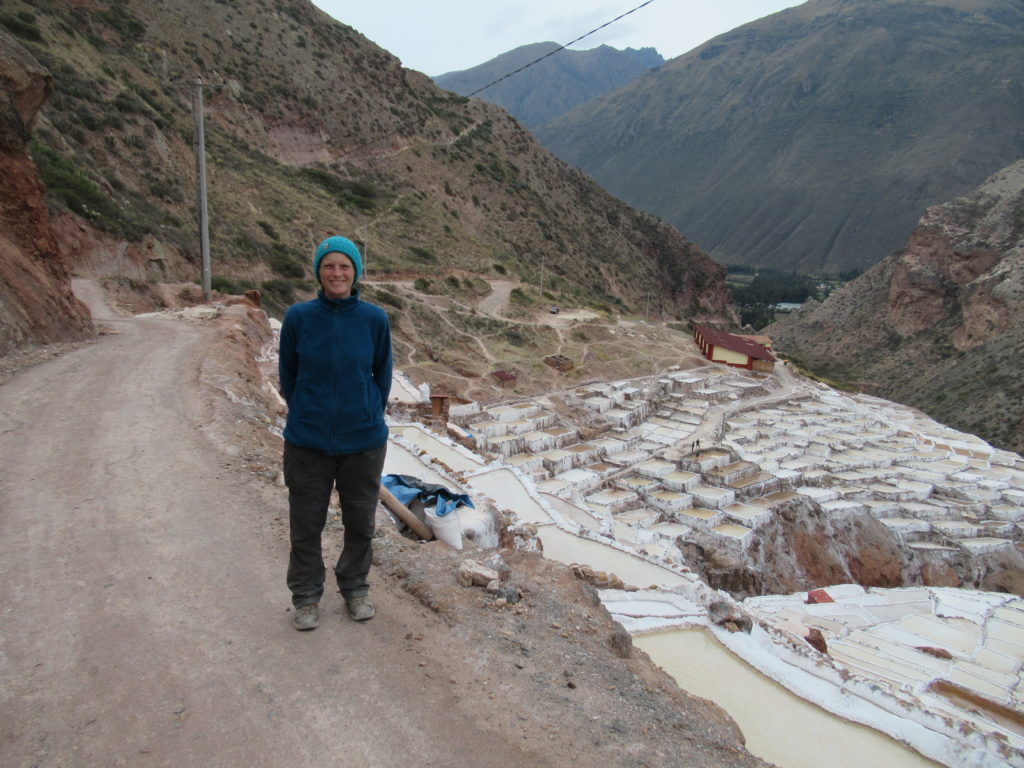
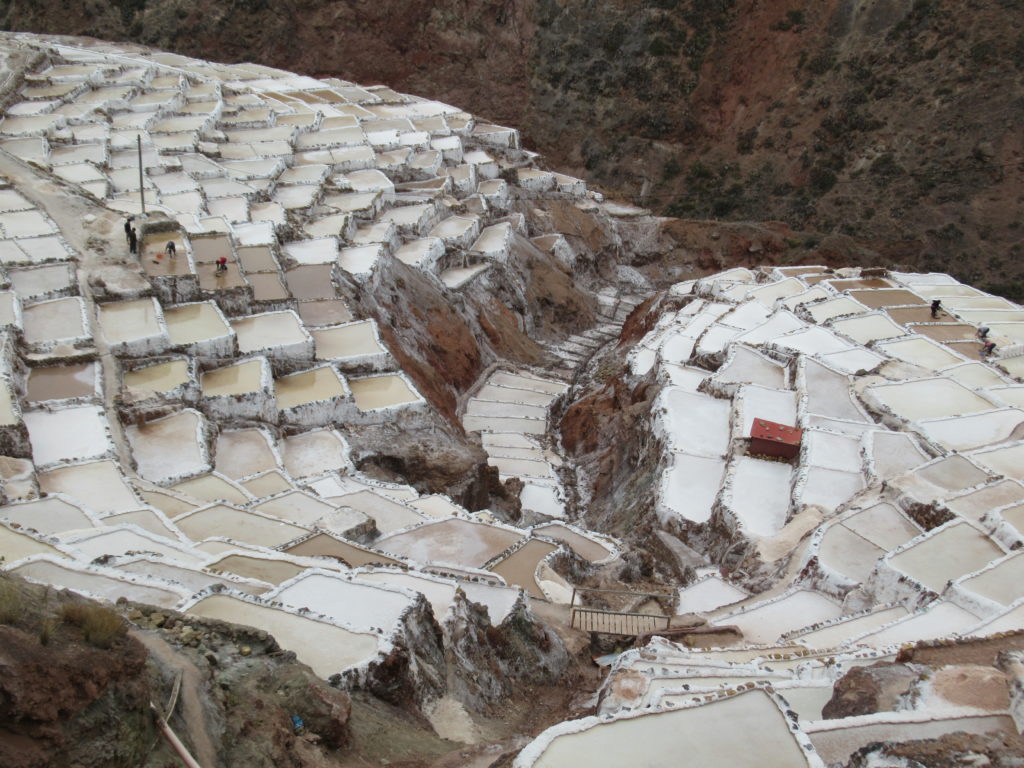
After the salt ponds, it was a another 4km down to the main road.
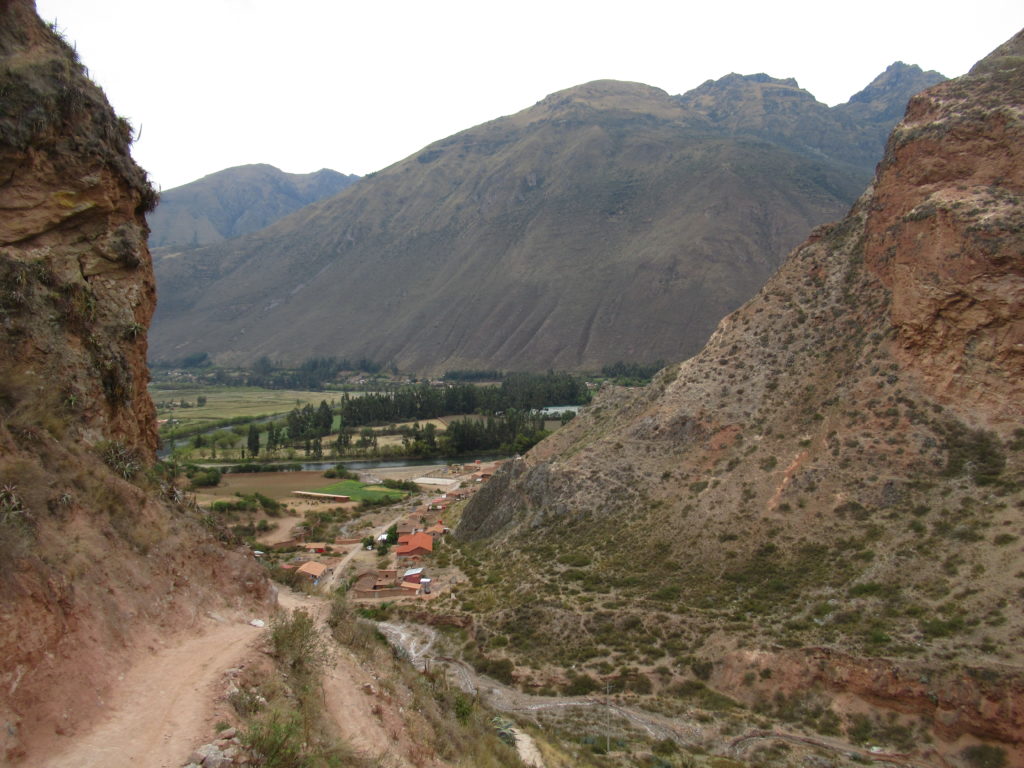
Once we reached the main road, we didn’t wait long until a bus came, and we were soon on our way back to Ollantaytambo. We hadn’t really known what to expect with this day out, but it was fantastic – one of our favourite days out of the whole trip! 🙂
